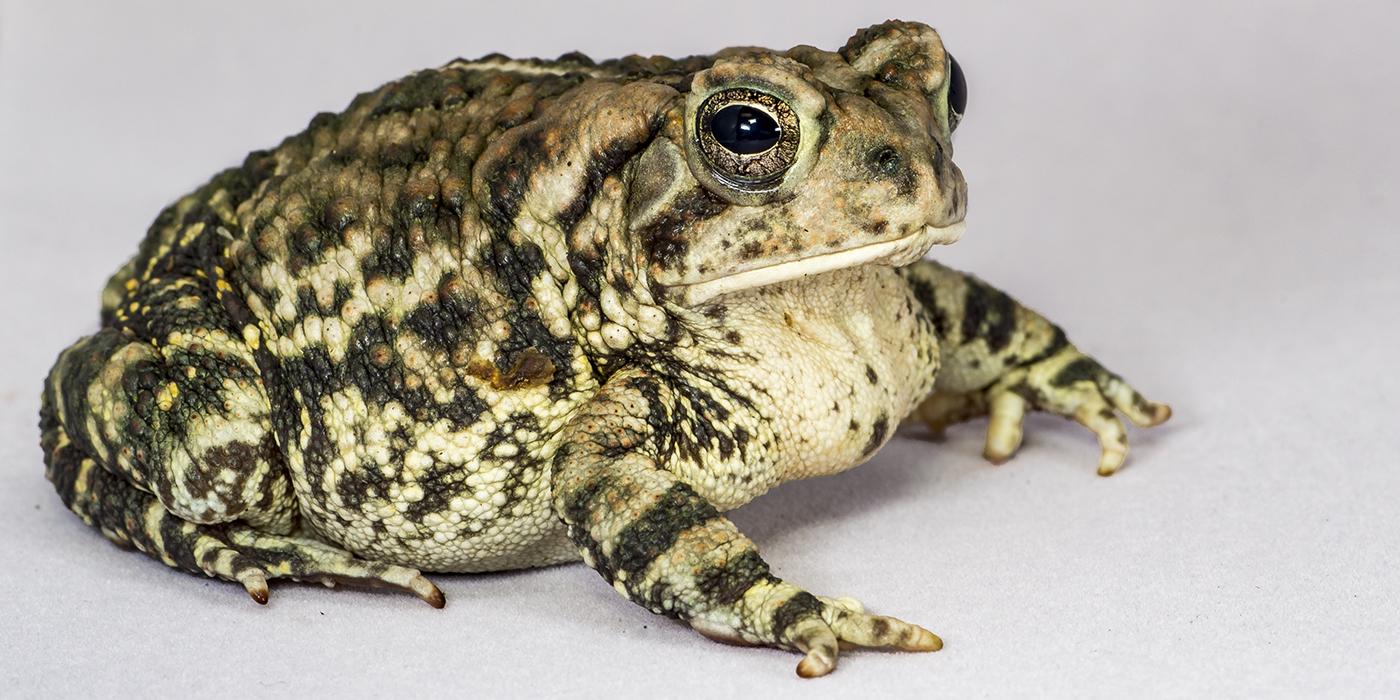Physical Description
Their backs and sides are mostly brown, gray, olive green and rusty red in color with darkened raised spots, or warts, scattered around the back. They have a pale stripe that runs down the center of the back, and their underbelly is pale. Males are usually darker in overall color than the females.
Size
Fowler's toads are a small toad species with adults ranging in size from 2 to 3.5 inches in length (5 to 9.5 centimeters).
Native Habitat
This species occurs throughout most of the temperate eastern United States and parts of southeastern Canada. It does not live in the warmer areas of the southeast United States such as the Florida peninsula. Fowler's toads can be found in a range of habitats associated with flood plains, including wooded areas, river valleys, near streams and ponds, marshlands and in agricultural fields. Fowler's toads burrow into the soil or hide under rocks, plants or other cover when inactive, usually during daylight hours.
Lifespan
The Fowler's toad has a typical life span of about 5 years.
Food/Eating Habits
Adult Fowler's toads in the wild mainly eat insects and small terrestrial invertebrates such as snails and worms. They hunt at night, emerging from their daytime resting areas to search for food. As tadpoles, they eat algae and bacteria from rocks and aquatic plants.
At the Smithsonian's National Zoo, they are primarily fed crickets and earthworms.
Sleep Habits
The toads are largely nocturnal and are most active on the spring and summer evenings.
Reproduction and Development
Breeding usually occurs in the spring or early summer with the exact timing dependent on the range they are found. In mid-range locations, Fowler's toads emerge and begin calling in mid-April. Males call from shallow waters; breeding occurs in wetland areas. Females lay eggs in strings with clutches of up to 20,000 eggs. Eggs are often laid after heavy rains. Eggs and larvae develop in shallow water of marshes, rain pools, ponds, lakes, reservoirs, flooded areas and other bodies of water lacking a strong current. Tadpoles go through metamorphosis within two months of hatching. They reach breeding age when they are around 2 years old.
Conservation Efforts
Fowler's toads are listed as a species of least concern by the IUCN due to their large population and wide distribution. Threats to regional populations include habitat loss and the pollution of water ways, particularly due to agricultural chemicals. Fowler's toads are also threatened by invasive species and diseases, such as chytrid fungus.
Help this Species
- Reduce, reuse and recycle — in that order! Cut back on single-use goods, and find creative ways to reuse products at the end of their life cycle. Choose recycling over trash when possible.
- Organize or attend a stream, river, lake or other waterway cleanup in your area to preserve aquatic habitats for local species.
Animal News

Leaf-tailed Gecko Treated for Skin Cancer With Chemotherapy



